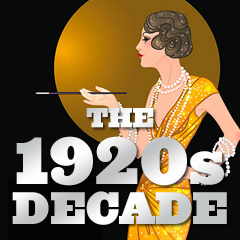|
Foundations of the Prolific Film Industry:
Films really blossomed in the 1920s, expanding upon the
foundations of film from earlier years. Most US film production at the
start of the decade occurred in or near Hollywood on the West Coast, although
some films were still being made in New Jersey and in Astoria on Long
Island (Paramount). By the mid-20s, movies were big business (with a capital
investment totaling over $2 billion) with some theatres offering double
features. By the end of the decade, there were 20 Hollywood studios, and
the demand for films was greater than ever. Most people are unaware that
the greatest output of feature films in the US occurred in the 1920s and
1930s (averaging about 800 film releases in a year) - nowadays, it is
remarkable when production exceeds 500 films in a year.
 Throughout most of the decade, silent films were the predominant
product of the film industry, having evolved from vaudevillian roots.
But the films were becoming bigger (or longer), costlier, and more polished.
They were being manufactured, assembly-line style, in Hollywood's 'entertainment
factories,' in which production was broken down and organized into its
various components (writing, costuming, makeup, directing, etc.). Throughout most of the decade, silent films were the predominant
product of the film industry, having evolved from vaudevillian roots.
But the films were becoming bigger (or longer), costlier, and more polished.
They were being manufactured, assembly-line style, in Hollywood's 'entertainment
factories,' in which production was broken down and organized into its
various components (writing, costuming, makeup, directing, etc.).
Even
the earliest films were organized into genres
or types, with instantly-recognizable storylines, settings, costumes,
and characters. The major genre emphasis was on swashbucklers, historical
extravaganzas, and melodramas, although all kinds of films were being
produced throughout the decade. Films varied from sexy melodramas and
biblical epics by Cecil B. DeMille, to westerns (such as Cruze's The
Covered Wagon (1923)), horror films, gangster/crime films, war films,
the first feature documentary
or non-fictional narrative film (Robert Flaherty's Nanook of the North
(1922)), romances, mysteries, and comedies (from the silent comic
masters Chaplin, Keaton, and Lloyd).
The Major Film Studios: The Big Five
1920-1930 was the decade between the end of the Great
War and the Depression following the Stock Market Crash. Film theaters
and studios were not initially affected in this decade by the Crash in
late 1929. The basic patterns and foundations of the film industry (and
its economic organization) were established in the 1920s. The studio
system was essentially born with long-term contracts for stars, lavish
production values, and increasingly rigid control of directors and stars
by the studio's production chief and in-house publicity departments. After
World War I and into the early 1920s, America was the leading producer
of films in the world - using Thomas Ince's "factory system"
of production, although the system did limit the creativity of many directors.
Production was in the hands of the major studios (that really flourished
after 1927 for almost 20 years), and the star system was burgeoning.
Originally, in the earliest years of the motion picture
industry, production, distribution, and exhibition were separately
controlled. When the industry rapidly grew, these functions became
integrated under one directorship to maximize profits, something called vertical
integration.
There were eight major (and minor) studios (see below) that
dominated the industry. They were the ones that had most successfully
consolidated and integrated all aspects of a film's development. By
1929, the film-making firms that were to rule and monopolize Hollywood
for the next half-century were the giants or the majors, sometimes
dubbed The Big Five. They
produced more than 90 percent of the fiction films in America
and distributed their films both nationally and internationally. Each
studio somewhat differentiated its products from other studios. See
History of Film Studio Logos.
| |
The Big Five Studios
|
Logos
|
|
1.
|
Warner Bros. Pictures was
incorporated in 1923 by Polish brothers (Jack, Harry, Albert,
and Sam).
In 1925, Warner Brothers merged with First National,
forming Warner Bros.-First National Pictures.
The studio's
first principal asset was Rin Tin Tin. It became prominent by
1927 due to its introduction of talkies (The
Jazz Singer (1927)) and early 30s gangster
films. It was known as the "Depression studio."
In the 40s, it specialized in Bugs Bunny animations and
other cartoons. |

1923-1925
|

1925-1929
|

1929-1935
|
|
2.
|
Adolph
Zukor's
Famous Players (1912) and Jesse Lasky's Feature Play
- merged in 1916 to form Famous Players-Lasky Corporation.
It
spent $1 million on United Studios' property (on Marathon Street)
in 1926.
The Famous Players-Lasky Corporation became Paramount studios
in 1927, and was officially named Paramount Pictures in
1935.
Its greatest silent era stars were Mary Pickford
and Douglas Fairbanks, and Rudolph Valentino; Golden Age stars
included Mae West, W.C. Fields, Bing Crosby, Bob Hope, and
director Cecil B. DeMille. |

|

|
|
3.
|
RKO (Radio-Keith-Orpheum)
Pictures, evolved from the Mutual Film Corporation (1912),
was established in 1928 as a subsidiary of RCA.
It was formed by RCA, Keith-Orpheum
Theaters,
and the FBO Company (Film Booker's
Organization) - which was owned by Joseph P. Kennedy (who had
already purchased what remained of Mutual).
This was
the smallest studio of the majors. It kept financially afloat
with top-grossing Astaire-Rogers musicals in
the 30s, King
Kong (1933), and Citizen Kane
(1941). At one time, RKO was acquired by eccentric
millionaire Howard Hughes. |

|

|

1929-1955
|
|
4.
|
Marcus Loew of Loew's,
Inc., was the parent firm of what eventually became Metro-Goldwyn-Mayer.
Metro Pictures Corporation was a production
company founded in 1916 by Richard A. Rowland and Louis B.
Mayer. In 1918, Mayer left this partnership to start up his
own production company in 1918, called Louis B. Mayer Pictures.
In 1920, Metro Pictures Corporation (with
its already-acquired Goldwyn Pictures Corporation)
was purchased by early theater exhibitor Marcus Loew of Loew's Inc.
In another acquisition, Loew merged his Metro-Goldwyn production
company with Louis B. Mayer Pictures.
So, in summary, MGM, first named Metro-Goldwyn Pictures,
was ultimately formed in 1924 from the merger of three US film
production companies:
- Metro Pictures Corporation (1916)
- Goldwyn
Pictures Corporation (1917)
- Louis B. Mayer Pictures
Company (1918)
The famous MGM lion roar in the studio's opening
logo was first recorded and viewed in a film in 1928.
Irving Thalberg (nicknamed the 'Boy Wonder')
was head of production at MGM from 1924 until his death in
1936. Its greatest
early successes were The
Big Parade (1925), Broadway Melody (1929), Grand
Hotel (1932), Mutiny on the
Bounty (1935), A Night
at the Opera (1935), The Good Earth (1937), Gone
With the Wind (1939), The
Wizard of Oz (1939),
as well as Tarzan films, Tom and Jerry cartoons,
and stars such as Clark Gable, Greta Garbo, and Spencer
Tracy. |

1916-1924

1924-1928

1924-1925

1928-1956
|
|
5.
|
Fox
Film Corporation/Foundation,
was founded in February, 1915 by NY nickelodeon owner William Fox
(originally a garment industry worker).
A year earlier, William Fox had entered production
with the Box Office Attraction Company (BOAC) that released
Fox's first production, Life's
Shop Window (1914). BOAC also released star Theda Bara's
first movie, A Fool There Was (1915), in January.
In 1935, it became 20th-Century Fox,
formed from the merger of two companies:
- 20th Century
Pictures Company (founded
in 1933 by Darryl F. Zanuck, the head of production at Warners
and Joseph Schenck, brother of Nicholas Schenk, president of
Loew's, the parent company of MGM)
- Fox
Film
The company became most known
for Fox
Movietone news and then B-westerns; it was also famous
for Shirley Temple films in the mid-30s and Betty Grable musicals
in the 40s. |
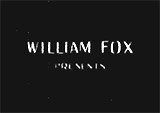
Pre-1930
|

1930-1933
|

1933
|

1933
|
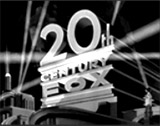
1935
|

|
The Big-Five studios had vast studios with elaborate sets
for film production. They owned their own film-exhibiting theatres (about
50% of the seating capacity in the US in mostly first-run houses
in major cities), as well as production and distribution facilities. They
distributed their films to this network of studio-owned, first-run theaters
(or movie palaces), mostly in urban areas, which charged high ticket prices
and drew huge audiences. They required blind or block bookings
of films, whereby theatre owners were required to rent a block of films
(often cheaply-made, less-desirable B-pictures) in order for the
studio to agree to distribute the one prestige A-level picture
that the theatre owner wanted to exhibit. This technique set the terms
for a film's release and patterns of exhibition and guaranteed success
for the studio's productions. [Monopolistic studio
control lasted twenty years until the late 1940s, when a federal decree
(in U.S. vs. Paramount) ordered the studios to divest their theatres,
similar to the rulings against the MPPC - the Edison Trust.]
The Minor Film Studios: The Little Three
Three smaller, minor studios were dubbed The Little
Three, because each of them lacked one of the three elements
required in vertical integration - owning their own theaters:
| |
The Little Three Studios
|
Logos
|
| 1. |
Universal
Pictures,
(or Universal Film Manufacturing Co) was founded by Carl
Laemmle in 1912.
It was formed from a merger of Laemmle's own IMP - Independent
Motion Picture Company (founded in 1909) with Bison 101,
the U. S. production facilities of French studio Éclair,
Nestor Film Co., and several other film companies.
Its first successes
were W. C. Fields and Abbott and Costello comedies, the Flash
Gordon serial,
and Woody Woodpecker cartoons |

1914-1922
|
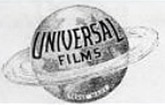
1920-1922
|

1923-1926
|

1927-1936
|
| 2. |
United Artists was
formed in 1919 by movie industry icons Mary Pickford, Douglas
Fairbanks, Sr., Charlie Chaplin, and director D.W. Griffith
as an independent company to produce and distribute their films.
United Artists utilized an 18-acre property
owned by Pickford and Fairbanks, known as the Pickford-Fairbanks
Studio, and later named United
Artists Studio in the 1920s. |

1919-1967
|
| 3. |
Columbia Pictures was originally the C.B.C.
Film Sales Corporation founded in 1920 by brothers
Jack and Harry Cohn, and Joseph Brandt, and officially named Columbia in
1924.
Their studios opened at the old location of Christie-Nestor
Studios.
It established prominence with It
Happened One Night (1934), Rita Hayworth films, Lost
Horizon (1937), The Jolson Story (1946),
and Batman serials. |

1919-1924
|
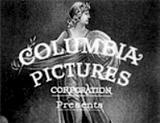
1924-1927
|

1928-1936
|

1936-1942
|
"Poverty Row" Studios and Other Independents:
Other studios or independents also existed in a shabby
area in Hollywood dubbed "Poverty Row" (Sunset Blvd.
and Gower Street) where cheap, independent pictures were made with low
budgets, stock footage, and second-tier actors. It was the site of Harry
and Jack Cohn's new business, the C.B.C. Film Sales Company (later
becoming Columbia Pictures). Many of the films of the independents
were either horror films, westerns, science-fiction, or thrillers:
- Disney Studios - specializing in animation;
Walt and Roy Disney originally opened their first studio in 1923 in
Los Angeles in the back of the Holly-Vermont Realty office, and called
it Disney Bros. Studio; in a few years, they opened a new facility
in downtown LA; in the late 30s, they relocated to a 51-acre lot in
Burbank, and changed their name to Walt Disney Productions
- the Monogram Picture Corporation - Rayart
Pictures, which had taken over the old Selig Studio in Echo
Park in 1924, became Monogram Pictures in 1930; it was founded
by W. Ray Johnston to make mostly inexpensive Westerns and series (Charlie
Chan, the Bowery Boys, etc.)
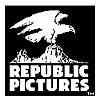 Selznick
International Pictures / David O. Selznick - it was formed in 1935
and headed up by David O. Selznick (previously the head of production
at RKO), the son of independent film producer Lewis J. Selznick,
the founder of Selznick Pictures Selznick
International Pictures / David O. Selznick - it was formed in 1935
and headed up by David O. Selznick (previously the head of production
at RKO), the son of independent film producer Lewis J. Selznick,
the founder of Selznick Pictures- Samuel Goldwyn Pictures - headed up by independent
film producer Samuel L. Goldwyn
- Republic Pictures - founded in 1935 by the merger
of smaller 'poverty row' studios: Consolidated Film Industries, Mascot,
Monogram and Liberty, and headed by Herbert Yates of Consolidated
Extravagant Movie Palaces:
 The major film studios built luxurious 'picture palaces' that were designed
for orchestras to play music to accompany projected films. The 3,300-seat
Strand Theater opened in 1914 in New York City, marking the end of the
nickelodeon era and the beginning of an age of the luxurious movie palaces.
By 1920, there were more than 20,000 movie houses operating in the US.
The largest theatre in the world (with over 6,000 seats), the Roxy Theater
(dubbed "The Cathedral of the Motion Picture"), opened in New
York City in 1927, with a 6,200 seat capacity. It was opened by impresario
Samuel Lionel "Roxy" Rothafel at a cost of $10 million. The
first feature film shown at the Roxy Theater was UA's The Love(s) of
Sunya (1927) starring Gloria Swanson (she claimed that it was her
personal favorite film) and John Boles. [The Roxy was finally closed in
1960.] The Roxy was unchallenged as a showplace until Radio City Music
Hall opened five years later. The major film studios built luxurious 'picture palaces' that were designed
for orchestras to play music to accompany projected films. The 3,300-seat
Strand Theater opened in 1914 in New York City, marking the end of the
nickelodeon era and the beginning of an age of the luxurious movie palaces.
By 1920, there were more than 20,000 movie houses operating in the US.
The largest theatre in the world (with over 6,000 seats), the Roxy Theater
(dubbed "The Cathedral of the Motion Picture"), opened in New
York City in 1927, with a 6,200 seat capacity. It was opened by impresario
Samuel Lionel "Roxy" Rothafel at a cost of $10 million. The
first feature film shown at the Roxy Theater was UA's The Love(s) of
Sunya (1927) starring Gloria Swanson (she claimed that it was her
personal favorite film) and John Boles. [The Roxy was finally closed in
1960.] The Roxy was unchallenged as a showplace until Radio City Music
Hall opened five years later.
Grauman's Theatres:
 Impresario Sid Grauman built a number of movie palaces in the Los Angeles area in
this time period: Impresario Sid Grauman built a number of movie palaces in the Los Angeles area in
this time period:
- Million Dollar Theater (on S. Broadway
in downtown Los Angeles),
The first movie palace in Los Angeles,
opened in February, 1918 with 2,345 seats, and premiered the William
S. Hart western film The Silent Man (1917)
- Egyptian Theatre (on Hollywood Boulevard)
Opened in 1922 with 1,760 seats; it was the first major movie
palace outside of downtown Los Angeles, and noted as having Hollywood's
first movie premiere; its opening film was Robin Hood (1922)
that starred Douglas Fairbanks; the theatre's creation was inspired
by the discovery of King Tut's tomb that same year
- Chinese Theater (on
Hollywood Boulevard)
With 2,258 seats,
opened in Hollywood in May, 1927 with the premiere
of Cecil B. De Mille's King of Kings (1927)
Star Imprints at Grauman's:
Grauman, dubbed as "Hollywood's Master Showman,"
established the tradition of having Hollywood stars place their prints
in cement in front of the theater to create an instant tourist attraction
ever since. (Legend has it that during the theatre's construction, silent
screen actress Norma Talmadge accidentally stepped into wet cement and
inspired the tradition. Grauman immortalized his own footprints, and invited
Mary Pickford and Douglas Fairbanks to do the same.) Listed below are
the first 10 stars, beginning in the spring of 1927, to imprint themselves
(with handprints, footprints, or signatures) in the concrete of the Chinese
Theatre's forecourt:
- Mary Pickford and Douglas Fairbanks, Apr. 30, 1927
- Norma Talmadge, May 18, 1927
- Norma Shearer, Aug. 1, 1927
- Harold Lloyd, Nov. 21, 1927
- William S. Hart, Nov. 28, 1927
- Tom Mix and Tony (his horse), Dec. 12, 1927
- Colleen Moore, Dec 19, 1927
- Gloria Swanson, 1927 (specific date unknown)
- Constance Talmadge, 1927 (specific date unknown)
- Charlie Chaplin, Jan, 1928
Pickford and Fairbanks:
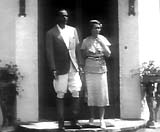 Two of the biggest silent movie stars of the era were
Douglas Fairbanks and Mary Pickford. America flocked to the movies to
see the Queen of Hollywood, dubbed "America's Sweetheart" and
the most popular star of the generation - "Our Mary" Mary Pickford. She
had been a child star, and had worked at Biograph as a bit actress in
1909, and only ten years later was one of the most influential figures
in Hollywood at Paramount. In 1916, she was the first star to become a millionaire. Two of the biggest silent movie stars of the era were
Douglas Fairbanks and Mary Pickford. America flocked to the movies to
see the Queen of Hollywood, dubbed "America's Sweetheart" and
the most popular star of the generation - "Our Mary" Mary Pickford. She
had been a child star, and had worked at Biograph as a bit actress in
1909, and only ten years later was one of the most influential figures
in Hollywood at Paramount. In 1916, she was the first star to become a millionaire.
She was married to another great star, Douglas Fairbanks,
Sr. Their wedding in late March, 1920 was a major cultural event, although
it was highly controversial since both of them had to divorce their spouses
so they could marry each other. She was presented with a wedding gift
- "Pickfair" [the first syllables of their last names], a twenty-two room
palatial mansion (former hunting lodge) in the agricultural area of Beverly
Hills - marking the start of the movement of stars to lavish homes in
the suburbs of W. Hollywood and the making of Hollywood royalty. [The
couple remained married from 1920-1935.] Strangely, Mary Pickford's downfall
began after she bobbed her long curly hair, one of moviedom's first fashion trends, in 1928.
 Douglas
Fairbanks, Sr. also became an American legend after switching from light
comedies and starring in a series of exciting, costumed swashbuckler and
adventure/fantasy films, starting with The Mark of Zorro (1920),
soon followed with his expensively-financed, lavish adventure film Robin Hood
(1922) with gigantic sets (famous for the scene in which he eluded death from sword-wielding attackers by jumping off a castle balcony and sliding down a 50 ft. curtain), and the first of four versions of the classic Arabian nights
tale by director Raoul Walsh, The Thief of Bagdad (1924). This magical film used state of the art, revolutionary visual effects (for
its smoke-belching dragon and underwater spider, the flying horse, the famed flying carpet, and
magic armies arising from the dust) and displayed legendary production
design. Douglas
Fairbanks, Sr. also became an American legend after switching from light
comedies and starring in a series of exciting, costumed swashbuckler and
adventure/fantasy films, starting with The Mark of Zorro (1920),
soon followed with his expensively-financed, lavish adventure film Robin Hood
(1922) with gigantic sets (famous for the scene in which he eluded death from sword-wielding attackers by jumping off a castle balcony and sliding down a 50 ft. curtain), and the first of four versions of the classic Arabian nights
tale by director Raoul Walsh, The Thief of Bagdad (1924). This magical film used state of the art, revolutionary visual effects (for
its smoke-belching dragon and underwater spider, the flying horse, the famed flying carpet, and
magic armies arising from the dust) and displayed legendary production
design.
Another first occurred in 1926
- a Hollywood film premiere double-featured two films together: Fairbanks' The Black Pirate (1926) with early two-color Technicolor (and the
superstar's most famous stunt of riding down a ship's sail on the point of a knife)
and Mary Pickford's melodramatic film Sparrows (1926). Fairbanks
scored again at the close of the decade with The Iron Mask (1929).
The first and only film that co-featured both stars was a talkie
version of The Taming of the Shrew (1929). Pickford's Coquette
(1929), her first all-talking film, won her an Academy Award, but
she retired prematurely four years later.
Other 1920s Box-Office Stars:
The top box-office stars in the 1920s included Harold
Lloyd, Gloria Swanson, Tom Mix, Norma Talmadge, Rudolph Valentino, Douglas
Fairbanks Sr., Colleen Moore, Norma Shearer, John Barrymore, Greta Garbo,
Lon Chaney, Sr., Clara Bow, and "Little Mary" Pickford.
 Hauntingly
mysterious and divine, Greta Garbo's first American film was
The Torrent (1926), followed quickly by The Temptress (1926).
Her first major starring vehicle was as a sultry temptress
in torrid, prone love scenes with off-screen lover John Gilbert in Flesh
and the Devil (1926). MGM renamed Broadway actress Lucille Le Sueur
and christened her "Joan Crawford" in 1925. And Louise Brooks
made her debut film in mid-decade with Street of Forgotten Men (1925).
Glamorous MGM star Norma Shearer insured her future success as "The
First Lady of the Screen" by marrying genius MGM production supervisor
Irving Thalberg in 1927. Hauntingly
mysterious and divine, Greta Garbo's first American film was
The Torrent (1926), followed quickly by The Temptress (1926).
Her first major starring vehicle was as a sultry temptress
in torrid, prone love scenes with off-screen lover John Gilbert in Flesh
and the Devil (1926). MGM renamed Broadway actress Lucille Le Sueur
and christened her "Joan Crawford" in 1925. And Louise Brooks
made her debut film in mid-decade with Street of Forgotten Men (1925).
Glamorous MGM star Norma Shearer insured her future success as "The
First Lady of the Screen" by marrying genius MGM production supervisor
Irving Thalberg in 1927.
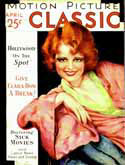 Clara Bow, a red-haired, lower-class Brooklyn girl was subjected to a
major publicity campaign by B. P. Schulberg (of Preferred Pictures (1920-1926)
and then Paramount's head of production in the late 20s and early 30s).
He promoted his up-and-coming, vivacious future star as his own personal
star, after grooming and molding her for her star-making hit film The
Plastic Age (1925) as a flirtatious flapper - the "hottest Jazz
Baby in Film." Bow was also exceptional in Dancing Mothers (1926)
and in her smash hit Mantrap (1926), and was further promoted with
teaser campaigns for It (1927). She soon became known as "The
It (sex appeal) Girl" (in the high-living age of flappers) after
its February 1927 release. She was boosted to Paramount Studios' super-stardom
in the late 1920s by more publicity campaigns, fan magazine glamorization,
and rumor-spreading. Bow also starred in the epic WWI film Wings (1927),
and in 1928 became the highest paid movie star (at $35,000/week). But
by 1933, after years of victimizing exploitation, she had gone into serious
decline and retired due to hard-drinking, exhaustion, gambling, emotional
problems, a poor choice of roles, the revelation of a heavy working-class
Brooklyn accent in the talkies, and a burgeoning weight problem.
Clara Bow, a red-haired, lower-class Brooklyn girl was subjected to a
major publicity campaign by B. P. Schulberg (of Preferred Pictures (1920-1926)
and then Paramount's head of production in the late 20s and early 30s).
He promoted his up-and-coming, vivacious future star as his own personal
star, after grooming and molding her for her star-making hit film The
Plastic Age (1925) as a flirtatious flapper - the "hottest Jazz
Baby in Film." Bow was also exceptional in Dancing Mothers (1926)
and in her smash hit Mantrap (1926), and was further promoted with
teaser campaigns for It (1927). She soon became known as "The
It (sex appeal) Girl" (in the high-living age of flappers) after
its February 1927 release. She was boosted to Paramount Studios' super-stardom
in the late 1920s by more publicity campaigns, fan magazine glamorization,
and rumor-spreading. Bow also starred in the epic WWI film Wings (1927),
and in 1928 became the highest paid movie star (at $35,000/week). But
by 1933, after years of victimizing exploitation, she had gone into serious
decline and retired due to hard-drinking, exhaustion, gambling, emotional
problems, a poor choice of roles, the revelation of a heavy working-class
Brooklyn accent in the talkies, and a burgeoning weight problem.
 Lon
Chaney, Sr., the "man of a thousand faces," starred in the earliest version
of The Hunchback of Notre Dame (1923), and then poignantly portrayed
the title character of the Paris Opera House in The Phantom of the
Opera (1925) in his signature role. The unveiling of the phantom's
face, when Christine (Mary Philbin) rips off his mask - was (and still
is) a startling sequence. Lon
Chaney, Sr., the "man of a thousand faces," starred in the earliest version
of The Hunchback of Notre Dame (1923), and then poignantly portrayed
the title character of the Paris Opera House in The Phantom of the
Opera (1925) in his signature role. The unveiling of the phantom's
face, when Christine (Mary Philbin) rips off his mask - was (and still
is) a startling sequence.
Young screen actress, platinum blonde starlet Jean Harlow
was also 'discovered' and soon contracted with aviation millionaire/movie
mogul Howard Hughes to replace the female lead in his soon-to-be-released,
re-made sound version of Hell's Angels (1930),
another exciting WWI film about British flying aces.
Janet Gaynor:
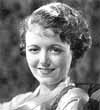 Another
famous screen couple, dubbed "America's Lovebirds" or "America's
Sweethearts" were romantic film stars Janet Gaynor and Charles Farrell
who were eventually paired together in twelve films. [The fact that Farrell
was homosexual was kept from the public.] Their first film was Seventh
Heaven (1927), a classic romantic melodrama. For their work in Seventh
Heaven, Janet Gaynor received the first "Best Actress" Academy Award
and director Frank Borzage received the first "Best Director" Academy
Award. Another
famous screen couple, dubbed "America's Lovebirds" or "America's
Sweethearts" were romantic film stars Janet Gaynor and Charles Farrell
who were eventually paired together in twelve films. [The fact that Farrell
was homosexual was kept from the public.] Their first film was Seventh
Heaven (1927), a classic romantic melodrama. For their work in Seventh
Heaven, Janet Gaynor received the first "Best Actress" Academy Award
and director Frank Borzage received the first "Best Director" Academy
Award.
Janet Gaynor was also honored in the same year with an
Academy Award for her exquisite acting in German director F. W. Murnau's
first American film - the beautiful Fox-produced Sunrise:
A Song of Two Humans (1927), often considered the finest silent
film ever made by a Hollywood studio. Murnau's succeeding films were The
Four Devils (1928) and Our Daily Bread (1930), with his last
film the sensual semi-travelogue documentary Tabu: A Story of the South
Seas (1931) shot with documentarist Robert Flaherty. (A week before
Tabu's premiere in early March 1931, Murnau died in a car accident.)
 Film History of the 1920s
Film History of the 1920s
Part 1, Part 2, Part 3, Part 4

 
|

